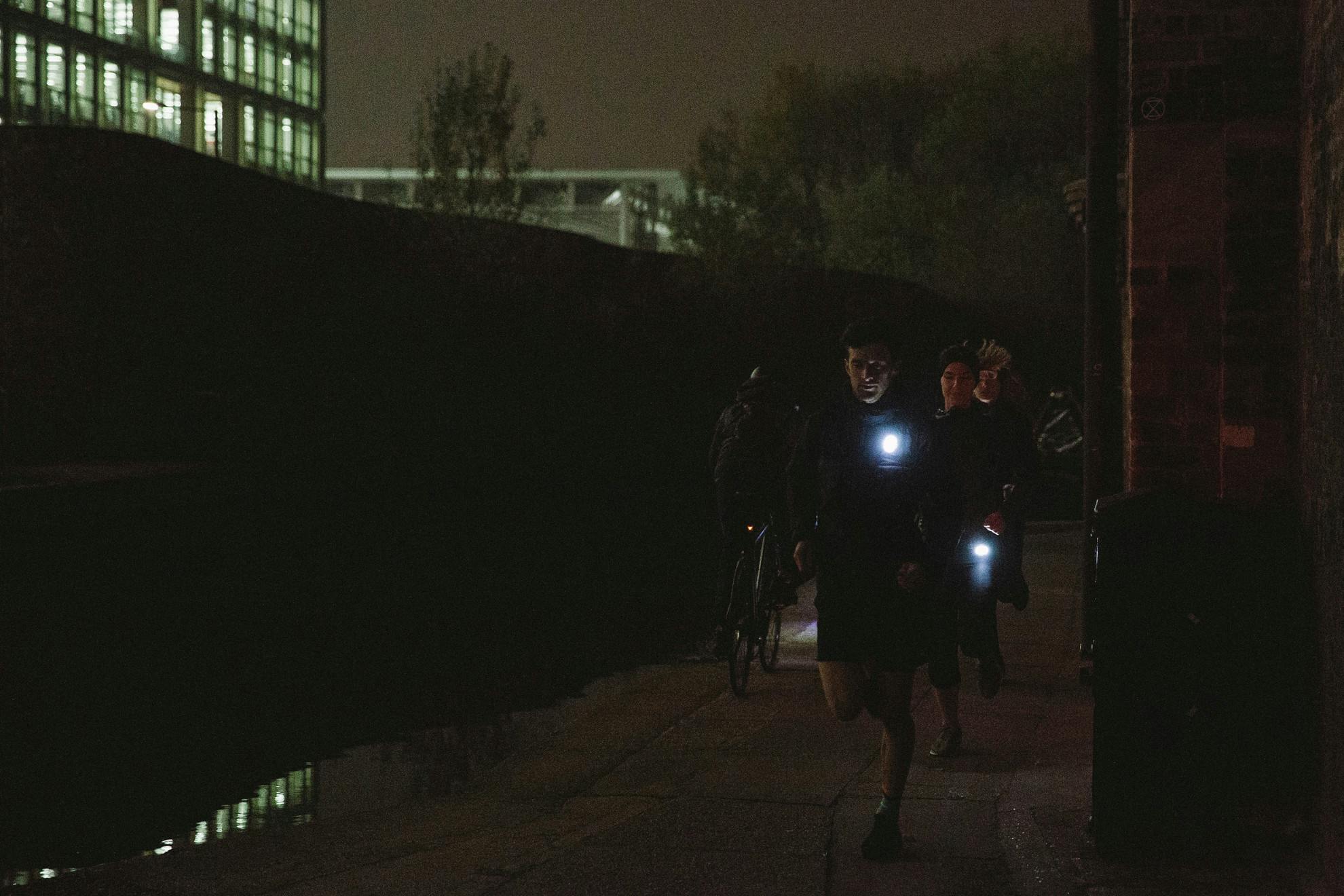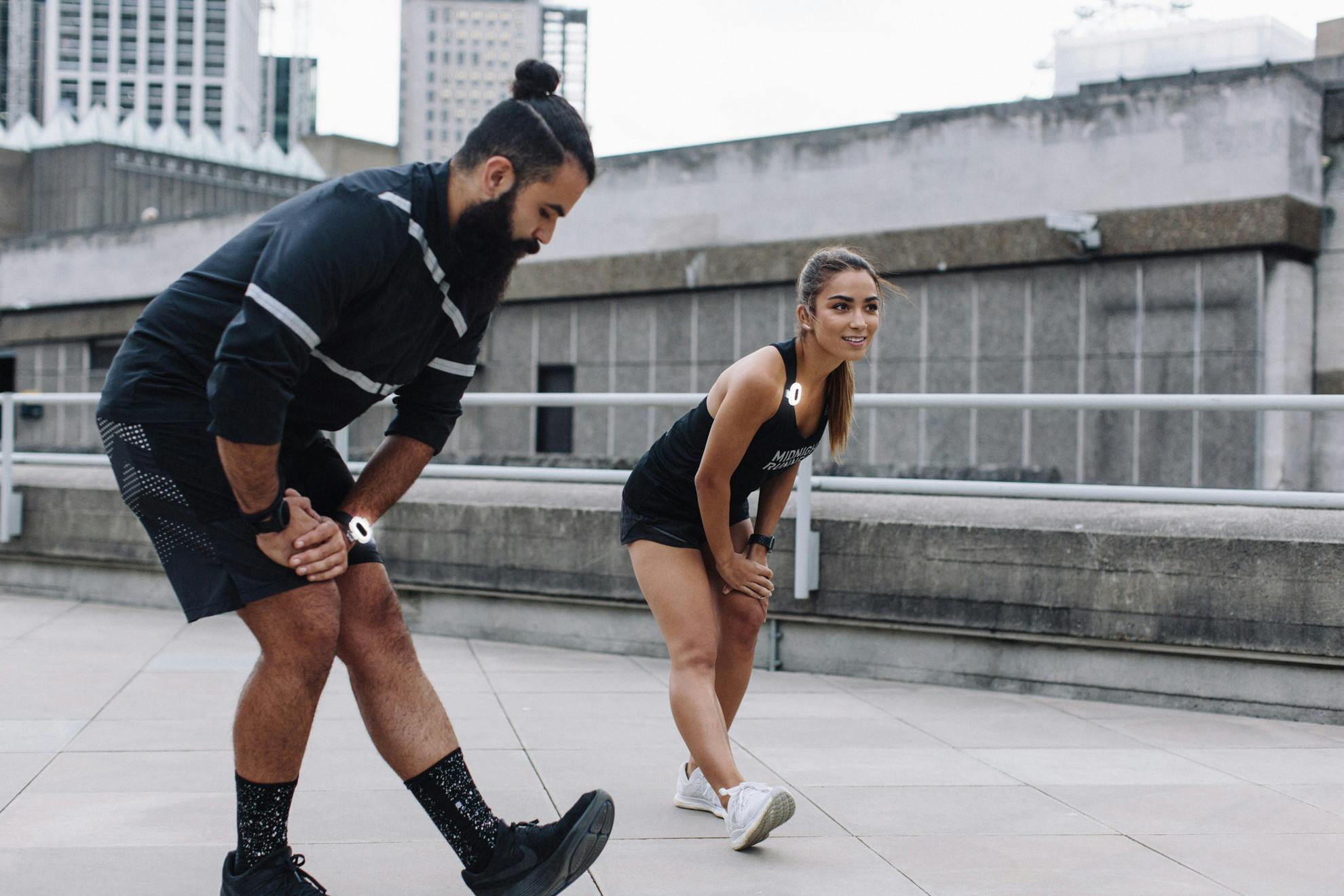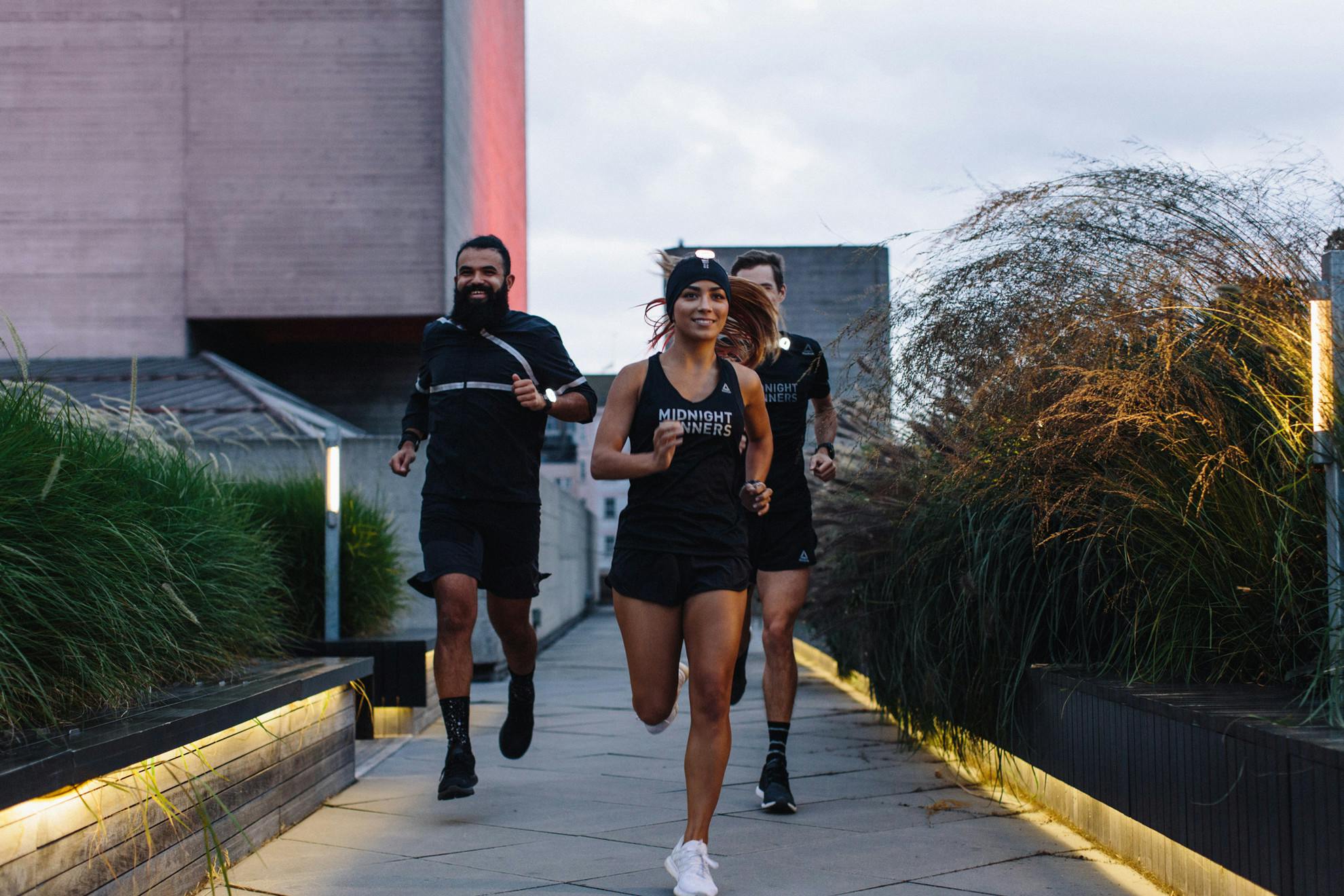How to start running to work
Our team's tips for getting started
Getting active on your commute is a great way to fit movement into your day. Running to work is one way to do it. Switching from the bus, train or car to two feet saves you money and gets a solid workout in before you even sit down at your desk. While it can seem like a daunting prospect some simple things can make it much easier to get started. We asked Beryl team members and regular run commuters Claire, Ian, Alex and Harry for their tips on how to start running to work.
Plan your route
Invest some time to plot a route to work. Back streets have less pollution than main trunk routes, so switch one street over for cleaner air. Some cities have interactive maps to help you choose lower pollution routes, like this one for London.
Take advantage of any parks, canals or green spaces on the way so you get a breather from the busy streets on the way and avoid phone-zombie pedestrians.
However, consider the light conditions at the time you’ll be running. “There are lots of parks I’d include in my run in the daytime which I’d avoid in the dark” advises Claire. “You need to feel safe on your run or you won’t enjoy it.”
If your commute is just too far to run in a one go, consider running part of the way. Get off at a station or bus stop a set distance from work and start from there.

Get prepared
Top of mind will be how to get clean after working up a sweat on the way into work. Do you have a shower at work or at a gym nearby? If you do, your planning will be more flexible. No shower? Your colleagues will probably not thank you for running to work, regardless of any “no shower” products you use. So run home and hop straight into your own shower.
Once you know which direction you’ll be running, you can plan when and where you’ll need clean clothes, towels, laptops and work equipment. If possible, take advantage of days you aren’t running to take work clothes and other items to your office so you can run with minimal weight.
Harry from our customer success team believes preparation is key. “Always have your bag packed the night before. You’ll have one less reason to chicken out and grab the tube”.

Kit yourself out
Just like cycling to work, you don’t need much specialist equipment to run to work. However, a good set of trainers is essential whenever you run.
Everyone suggested a good backpack to carry clothes, money, keys and other bits and pieces. For Ian, a good hip strap is essential to take the weight off your back. Harry also looks for a bag with adjustable straps to strap it snuggly to your back so it won’t bounce around while you run. Alex doesn’t run with a bag and instead is super organised so he can run freely. “Setting up contactless payment on my phone means I can leave a wallet behind. It’s one less thing to carry”.
Claire finds the backpack helps her pace her commute. “When I run without a backpack, I immediately start trying to get up to race pace. Running with a backpack puts me in a commuting mindset and helps me regulate the journey.”

Make sure you are visible
Being visible while you’re out running is always really important. Look for running jackets or leggings with reflective details, and add some lights such as the Pixel to your bag or headband to make sure you are seen. This is particularly important on dark canal paths and on smaller back streets that have better air quality but are often poorly lit.

Start small and build up
Running to work is a great goal to have but being realistic about how much you can do will stop you getting demotivated.
Start by choosing a couple of days a week to run, and give yourself plenty of extra time so that you’re not stressing out if it takes longer than expected. Walking is still a great way of getting active, so alternating between running and walking will let you cover the distance while you build up your fitness.
If you are combining a bus journey with running, start by getting off the bus at a manageable distance. As you get fitter and stronger, get off the bus a stop earlier to increase distance.
Harry likes to stop running 5 minutes before he gets to Beryl HQ. “It gives my body a chance to cool down properly” he says. And don’t forget to stretch before sitting down in front of your screen.

Enjoy the run
Ian often runs to work. He suggests that instead of using the commute to break records, let it be a time in your day when you clear your head and have some time to yourself. “For me, the run commute is not the place to try and set personal bests. There are so many variables in terms of crossing roads, traffic lights and other people around. I use the run to meditate - it’s part of my day where I can completely disconnect”.
Motivate yourself
Once you’ve tried running to work a few times, you might need more motivation to keep the routine up, especially in bad weather. Claire has a good reason to run - “I combine a run commute home with GoodGym. I can’t cancel at the last minute because I know someone is relying on me to show up." She also suggests getting a running buddy, so have a chat to colleagues and find out who could share some of the route with you.
Listening to music or podcasts can also help the miles fly by. Harry recommends investing in a good pair of running headphones for this. “But make sure you look left and right multiple times before crossing roads!”
Here are our team's top tips for getting started with a run commute:
- Plan your route well
- Get prepared in advance
- Kit yourself out to stay comfortable
- Make sure you are visible
- Start small and build up
- Enjoy the run
- Motivate yourself